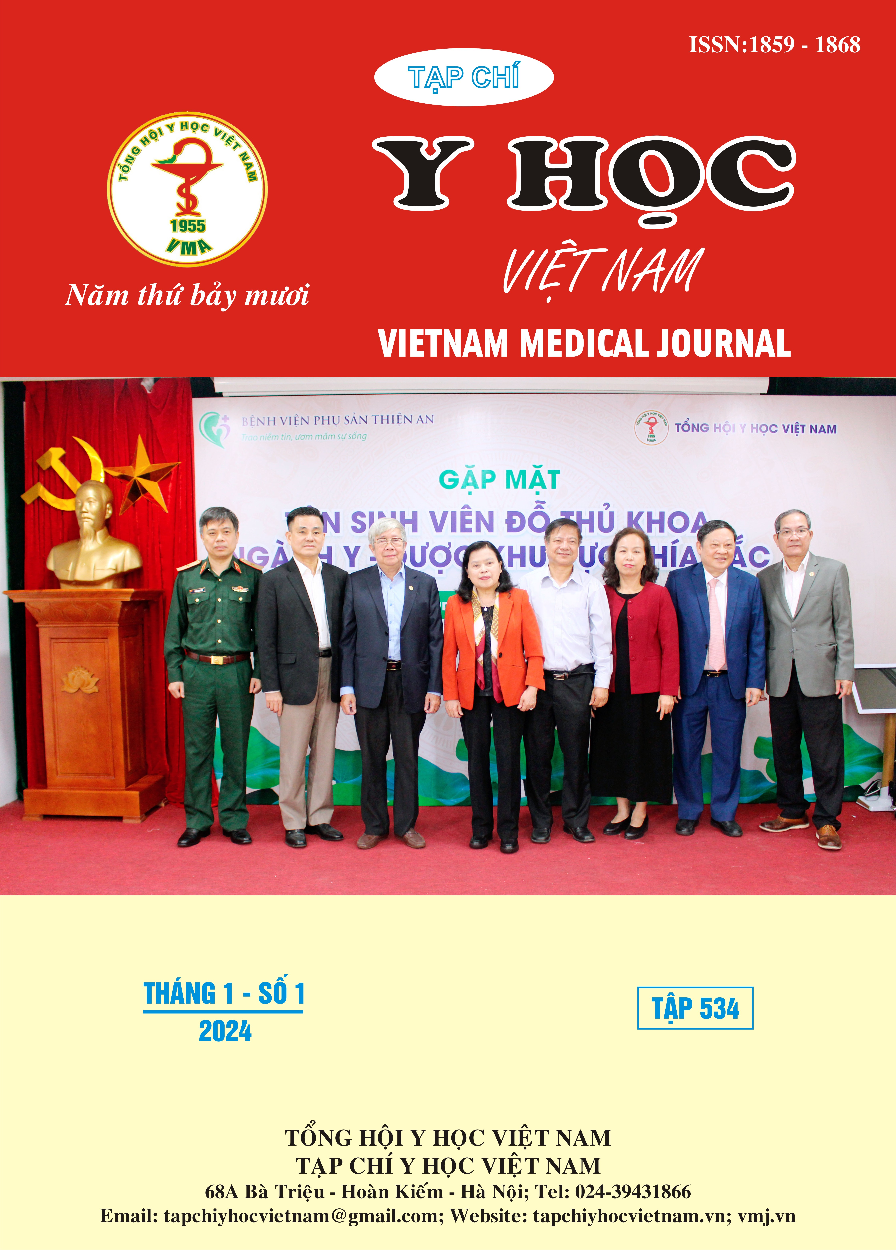PREGNANCY OUTCOMES AND ASSOCIATED FACTORS OF INTRAUTERINE INSEMINATION METHOD AT THE NATIONAL HOSPITAL OF OBSTETRICS AND GYNECOLOGY
Main Article Content
Abstract
Objects: Pregnancy outcomes and related factors of the intrauterine insemination (IUI) method at the National Hospital of Obstetrics and Gynecology. Subjects and Methods: A descriptive observational study was conducted on 153 IUI cycles among infertile couples from June 2022 to May 2023 at the National Hospital of Obstetrics Hospital. Results: The number of clinical pregnancies after IUI is 24, which accounts for 16,99%. While the percentage of single pregnancy is 15,69%, the figure for ectopic pregnancy is 3.85%. The percentages of pregnancy in women with one dominant follicle and two dominant follices are 27,66% and 11.32%. While the rate of pregnancy for women with endometrial thickness less than 8mm is 4,55%, the figure for women with endometrial thickness is from 8 mm and above is 21.1%, with p < 0.05. Women didn’t get pregnancy if post-wash sperm count is less than 20 millions/ml, with p < 0.05. Conclusion: The clinical pregnancy rate was 16.99%, and ectopic pregnancy rate was 3.85%. The number of dominant follicles in one or both ovaries, endometrial thickness < 8 mm, sperm density < 20 million/ml, older mother's age and infertility duration were factors that reduced the pregnancy rate.
Article Details
References
2. Nguyễn Khắc, L., Những điều kiện cần cho sự thụ tinh, in Vô sinh - chẩn đoán và điều trị. 2002, Nhà xuất bản Y học: Hà Nội.
3. Lê Thị Minh, N., Mối liên quan một số chỉ số tinh dịch đồ theo WHO 2010 và tỷ lệ có thai trong điều trị vô sinh bằng bơm tinh trùng vào buồng tử cung. 2016, Trường đại học Y Hà Nội.
4. Hoàng Thị Phương, T., Nghiên cứu một số yếu tố liên quan và kết quả của phương pháp bơm tinh trùng vào buồng tử cung tại Bệnh viện Phụ sản Trung ương năm 2016. 2017, Trường đại học Y Hà Nội.
5. Đỗ Thị Hằng, N., Nghiên cứu kết quả và một số yếu tố liên quan của phương pháp bơm tinh trùng vào buồng tử cung tại Bệnh viện phụ sản Trung ương 2012. 2012, Trường đại học Y Hà Nội.
6. Nguyễn Hữu, H., Kết quả điều trị vô sinh bằng phương pháp bơm tinh trùng vào buồng tử cung tại Bệnh viện Sản nhi Nghệ An. 2020, Trường đại học Y Hà Nội.
7. Đỗ Văn, T., Đánh giá điều trị vô sinh bằng bơm tinh trùng vào buồng tử cung tại Bệnh viện sản nhi Bắc Ninh. 2019, Trường đại học Y Hà Nội.
8. Ayeleke, R.O., et al., Intra-uterine insemination for unexplained subfertility. Cochrane Database Syst Rev, 2020. 3(3): p. Cd001838.
9. Yousefi, B. and A. Azargon, Predictive factors of intrauterine insemination success of women with infertility over 10 years. J Pak Med Assoc, 2011. 61(2): p. 165-8.
10. Phạm Thu, T., Nghiên cứu chửa tại vòi tử cung sau bơm tinh trùng vào buồng tử cung hoặc thụ tinh trong ống nghiệm. 2016, Trường đại học Y Hà Nội.


